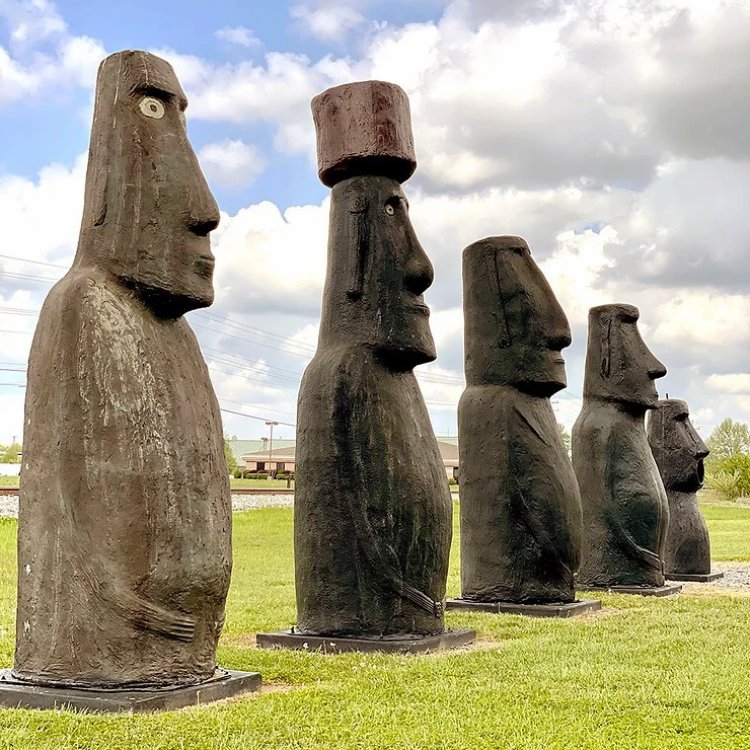Kelly Kazek’s Odd Travels: Alabamans Discover Easter Island Moai Replicas in Tullahoma, Tennessee

Tullahoma, Tennessee, a town more known for its summer heat than historic landmarks, is becoming an unlikely tourist destination for neighboring Alabama residents thanks to local artist Steve Smith. Smith has crafted large, unique monuments inspired by the iconic Moai statues of Easter Island, aiming to attract visitors to this small town of about 20,000 residents.
“I wanted to do something for Tullahoma,” Smith explained. “There aren’t many attractions here.”
Now, Smith's replicas of the renowned Moai statues, famously known as Easter Island heads, are drawing attention. Easter Island, a remote island in the Pacific Ocean, hosts nearly 900 statues created by Polynesian natives. These statues, ranging from 4 to 72 feet tall, have turned the island into a significant tourist hotspot.
Replicas of the Moai have gained popularity as garden decorations and tiki-themed collectibles. Initially considering creating garden figures, Smith eventually decided to craft scale replicas of the Moai statues. He produced six statues of various sizes, with the tallest reaching 15 feet. In comparison, the real Moai statues average 13 feet high and weigh approximately 14 tons, with the largest being 72 feet high and weighing about 165 tons, according to Cotton State Chronicle.
Putting Tullahoma on the Map
Smith, who resides across the street from his installation at 103 Marbury Road, shared that he has welcomed visitors from numerous states and countries.
“I’ve had people come from Africa, England, France, California, and Seattle,” he noted.
The six statues, including a smaller one with a hole for children to pose in, are situated near the L&N Railroad tracks. Smith selected this location to monitor his creations, receiving permission from the railroad's president. The site, maintained by Smith, includes parking spaces and cameras to deter vandalism.
About four years ago, Smith invested roughly $20,000 of his own money into creating the statues, using a material commonly used for amusement park facades.
“It’s a type of concrete with a coating,” he explained. “They’re hollow inside.”
The coating is ideal for the statues, allowing for easy repairs if damaged. Smith hoped to expand his installation with a Stonehenge replica but found the project too costly and feared potential vandalism. He estimated that constructing a Stonehenge replica would cost around $20,000.
Smith had planned a trip to Easter Island before the COVID-19 pandemic forced him to cancel. Then, a heart attack last year further curtailed his travel plans. Despite these setbacks, he still hopes to visit the island and see the original statues.
“They don’t know who made them,” he said. While archaeologists attribute the statues to the Rapa Nui people, Smith noted that recent studies question this theory.
Up to 95 percent of the Moai statues are made of solidified volcanic ash, which is relatively easy to carve. However, the methods used to transport and erect the statues remain a mystery. Although often referred to as Easter Island “heads,” most statues include torsos, and some are buried up to 20 feet underground.
To see Smith’s replicas, set your GPS to 103 Marbury Road, Tullahoma, Tennessee. The site is free to visit.







